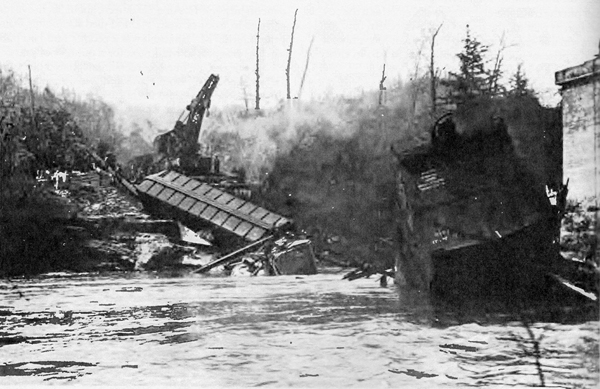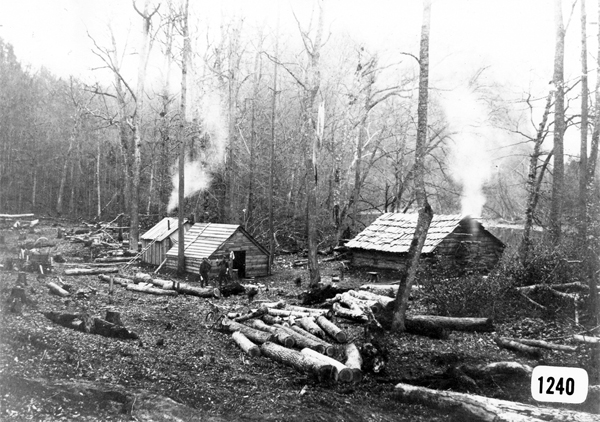

Jaynell Graham
Editor
Day in and day out, hikers and bikers can be seen making their way up and down the 77-mile Greenbrier River Trail in Pocahontas and Greenbrier counties.
The air is a little cooler there, the river offers a sense of peace and tranquility and the occasional sighting of wildlife adds to the adventure.
Little thought is given as to the adventure, risk and hard work that went into establishing such a fine recreational trail.
William P. McNeel just published a revised edition of his popular book, “The Greenbrier River Trail – Through the Eyes of History.” In it he tells about the rail stations and towns that came and went during the timbering heyday of the last century and offers a list of amenities – such as camping and picnic areas – that are available along the trail today.
His introduction begins,” No doubt the users of the Greenbrier River Trail are aware of its original existence as a railroad. However, many of the people on the trail are of an age that has no personal knowledge of the importance railroads had in the life of the nation…
The physical evidence that exists today along the trail – particularly with the leaves on the trees – gives little indication of what a busy stretch of railroad the Greenbrier Division of the Chesapeake and Ohio Railway was for many years…
“A person spending a day trackside about 1910 would have observed four passenger trains and several freight trains hauling out the production of about 25 sawmills, two tanneries, the area’s farms and smaller industries. The freights would also bring in the needs and wants, large and small, of the people of the Greenbrier Valley. Moving ahead to the mid-1920s, our observer would now find added to the schedule “timed” freight trains using the line as a route for traffic between Chicago and eastern cities. In both world wars, the Greenbrier line was one of the transportation corridors essential for victory.”
Knowing the history, as you hike or bike today, you might hear the faint chink, chink, of a pick axe cutting the railroad’s path through the mountains. Or, you might hear the faint sound of a far off whistle.
So, let’s get started.

Construction began in July 1899, and the new town of Cass was reached in 1901, where West Virginia Pulp and Paper put in a large sawmill that began operation in January 1902.
The railroad extended to Durbin in 1902 and Winterburn in 1905.
The C & O had standard plans for its depots. They all had the same exterior design and identical interiors – waiting room, office and freight room.
Flagstops were also found along the line. These stops provided a shelter for the passengers as they waited to signal or “flag down” and board the train.
Although little remains of the sawmill towns, the areas can be identified by the railroad’s mileposts that remain along the trail.
If you are passing by Milepost 11.09 on the southern end of the trail, you are in the vicinity of Keister. It was one of the original stations on the line. It was discontinued as a freight station in 1956, but remained on the passenger timetable. This stop, as many others, had a section foreman’s house, bunk house and a section tool house.
Families lived in the section house, and the “man of the house” was responsible for inspecting and maintaining a certain “section” of the track.
When you reach Milepost 37.40, you are at what was once Breakneck. There was a 12×12 foot freight house at this station. Trains were operating to this point by the middle of September 1900. The name was changed from Breakneck to Locust. They ceased to handle freight, but remained a passenger flagstop. Just up the trail, at 37.57, you will cross the Locust Creek Bridge.
Traveling north to Milepost 41.70, you will find yourself at Burnsides where a small shelter was provided for passengers. It, too, was removed from the freight station list in 1956, but remained a flagstop for passengers.

At Seebert, Milepost 45.77, there was an agency station and telegraph office. Seebert was one of the original stations on the line and it was a busy place, shipping lumber and coal and sheep and cattle. The animals were driven to the train station on foot from the surrounding areas. An item in The Pocahontas Times reported that each farmer was given a specific time to arrive with his livestock to avoid a calamity. That process worked if the train was on time, but the article tells of a day when the whole town of Seebert was overrun by animals because of a delay. Gardens and flower beds became grazing land and it took a while to sort out whose animals were whose.
Two sidings were located at Violet: Milepost 49.24. This station was first listed as Beaver Creek, then changed to Dan, then to Violet.
Milepost 52.16 at Buckeye was one of the original stations on the Greenbrier line. It had a 10.5×19.5 foot passenger shelter/freight room building. This shelter was located catty-cornered to today’s trail parking area. This station also had a section foreman’s house and section tool house. It was reduced to a passenger shelter by 1943. Although never a full agency station, Buckeye did have a ticket agent for a number of years, beginning in 1912.
The American and Column Lumber Company was located there for a few years, as can be seen in the photo included in “The Greenbrier River Trail.”

At Milepost 53.86, you will cross the Monday Lick bridge right before the location of the former siding and switch at Munday Lick, Milepost 53.92
The Sunday Lick Run bridge is at Milepost 54.07.
You can’t miss the Marlinton depot with his bright yellow paint. It now houses the 4th Avenue Gallery. On October 26, 1900, the whole town showed up for a grand rally to celebrate the first train in their town. They also turned out to see their sons, husbands and fathers board the train to go off to war.
Further up the line at Milepost 60.25 was the town of August. It served a lumber operation on Brush Lick Run across the river from the railroad.
Thorny Creek at Milepost 61.28 and 60.90 had a 15×24 foot freight house for the Kendall Lumber Company. There was also a passenger shelter.
Raywood, at Milepost 78.46, had an agency station and telegraph office. The depot served the mill and town of the Warn Lumber Corporation, later Forest Lumber Company.
There are a lot of fun but forgotten names in this book.
Coyner, Dryder, Orwig and Bock were located between Clover Lick and Stony Bottom, and then here’s Lombardy, Nichols, Camper and more. All gone now, but recorded in McNeel’s book, “The Greenbrier River Trail – Through the Eyes of History.”
From excavation of the rail bed, the construction of the tracks and operating the trains to the production of the products hauled out of the county, every move required a hard day’s work – for some, it was a lifetime’s work.
You’ll find no better resource of the history of the building of The Greenbrier Division of the Chesapeake and Ohio Railway than in William P. McNeel’s book, “The Durbin Route.”
It contains a wealth of railroad history in words and wonderful – sometimes unbelievable – photos that will continue to tell the story to future generations.
One of the most interesting items is a prediction made by a Greenbrier County writer in 1956 anticipating “an increased number of passengers on the little train that ran along the Greenbrier River.” He writes:
“The route along the river is justly considered one of the most scenic in the nation – though a nation has not discovered it yet, and our own people are too accustomed on the one hand and too unaccustomed on the other to recognize it. It has been obscured by the motor age and highways miss it.
“The day is probably not far off when people of the nation will discover the scenic enchantment that a trip up the Greenbrier Division affords… There will be a renaissance of travel on the Greenbrier Division.”
That prediction eventually became a reality, but not as the writer imagined.
Today, the Greenbrier River Trail is a place where the people of the nation have “discovered the scenic enchantment that a trip up the Greenbrier Division affords.”
The Durbin Route contains 170 pages of history, maps and photos – photos of the construction, crowds at various depots and train wrecks that caused trouble aplenty.
As they used to say, “It’s worth the price – just for the pictures!”
“The Greenbrier River Trail – Through the Eyes of History” and “The Durbin Route” are available for sale at The Pocahontas Times office on Main Street in Marlinton.



